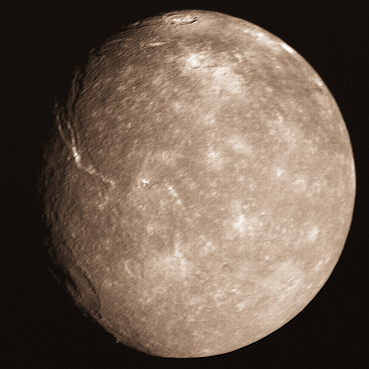
|
Credit & Copyright: NASA, Voyager 2, Calvin J. Hamilton
Explanation:
Titania's tortured terrain is a mix of valleys and craters. NASA's
interplanetary robot spacecraft Voyager 2 passed this moon of
Uranus in
1986 and took the above photograph. The photograph was then transmitted
back to earth by radio. The valleys of
Titania
resemble those on
Ariel indicate that Titania underwent some unknown
tumultuous resurfacing event in its distant past. Although
Titania is
Uranus' largest moon, it is still much smaller than
Triton - the largest
moon of Uranus' sister planet
Neptune. Titania is essentially a large dirty
iceball that orbits Uranus - it is composed of about half water-ice and
half rock. Titania was discovered by William Hershel in 1787.
Information:
The
Scale of the Universe Debate in April 1996
|
January February March April May June July August September October November December |
| ||||||||||||||||||||||||||||||||||||||||||||||||
NASA Web Site Statements, Warnings, and Disclaimers
NASA Official: Jay Norris. Specific rights apply.
A service of: LHEA at NASA / GSFC
& Michigan Tech. U.
Based on Astronomy Picture
Of the Day
Publications with keywords: Uranus - titania
Publications with words: Uranus - titania
See also:
